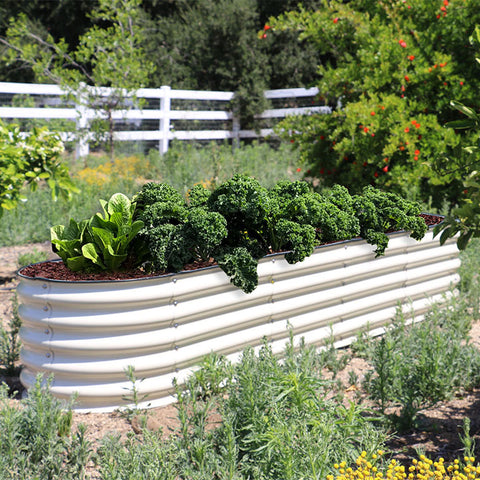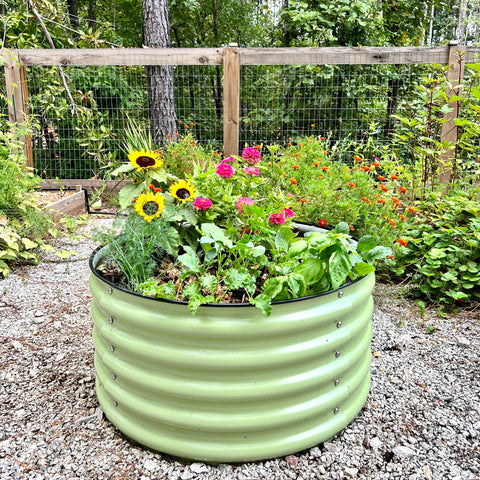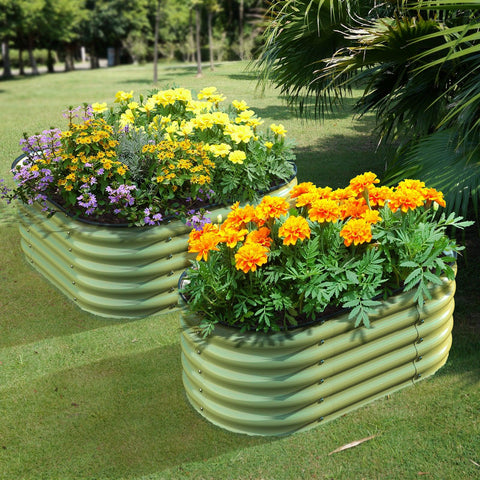Tips from Olle Garden Bed: How to Prevent Deer from Damaging Plants In Winter
Looking for some effective ways to prevent deer from damaging your plants, shrubs, shrubs and trees during the long winter? The following content also has some reference value for raised garden beds.
Although deer can eat plants in spring, summer and autumn, they become more aggressive when attacking plants in winter. Why? There is simply not enough food. Especially if you happen to live in an area where deer are out of control.
Since there was little fresh growth throughout the winter, deer turned their hungry appetites to other places. This may include chewing on branches and bark, or swallowing the leaves of small shrubs and perennials.

Deers attack their favorite plants at any time of the year, but when cold weather causes food shortages, they become particularly aggressive.
Unfortunately, if plants are damaged in winter, they can cause significant long-term health problems. In fact, many times, it can be fatal. When a plant is dormant, its ability to repair damage is zero. When the anger of winter is released, it is easy to freeze or kill plants.
In addition to installing an 8-foot fence around your property, stopping hungry deer seems a daunting task. But the good news is that there are some defense methods that are very effective in preventing winter deer attacks.
How to prevent deer from damaging plants
Most importantly, the key to successfully prevent winter deer damage is to establish defense measures as soon as possible! When winter comes, your plants will not only face the risk of early attack, but also make it extremely difficult for you to exercise in the natural environment.
With this in mind, here are some of the best ways to keep deer out of the yard - and how to put them in place before damage starts!
Use burlap to protect shrubs and trees -- how to prevent deer from damaging plants
If you have small trees or shrubs, they are the main target of deer! The tender bark and branches are simple snacks. Especially for deer looking for fast food. And this is where burlap can save a day!
Burlap is a great choice for wrapping bark around shrubs and trees. Deer likes to scrape and chew the bark. If the damage is serious enough, it can kill trees or shrubs.
Burlap works well because it still allows plants to breathe, but prevents deer from entering bark or branches. Unfortunately, plastic mesh coverings are usually not thin or hard enough to prevent bark from scratching.
In addition, the slender leaves of evergreen shrubs such as trees can still pierce the mesh, making it easy for deer to chew at will. However, covering with burlap will make everything invisible and will not enter the deer's mouth.
When wrapped with burlap, the secret of success is to raise it to the height of the tree trunk or bushes, so that the deer cannot reach any part of the plant. If they can reach it, they will eat it! Look for rolled burlap that can be wrapped or cut to size

Mesh/wrap smaller plants – how to prevent deer from damaging plants
When it comes to protecting perennial plants in flower beds from deer, covering them with fine mesh is the best way.
For best results, loosely wrap several layers around each plant. By layering, it is almost impossible for deer to chew the net to reach the plant
Better yet, it is easy to install with a simple zipper strap and can be reused year after year. The same mesh mesh is also very suitable for use in summer to protect vegetable plants and fruit trees from birds and animals.
If bushes are covered, use some stakes on both sides to support the net. Loosely wind the net on the wooden pile to make it difficult for deer to contact the plants. For flower beds and small shrubs, just cover the area and tie it to small branches with zippers, or fix it with several small stakes.
Homemade egg/pepper spray to stop deer – how to prevent deer from damaging plants
Self made egg spray is another good choice to protect tree trunks, branches and plant leaves. Deers tend to avoid several natural substances, the two best of which happen to be eggs and hot fish. When you combine the two, they will produce surprising deterrent power!
To make the spray, mix six fresh eggs with a gallon of water. Use a blender to completely mix the two ingredients together.
In a separate pan, add a cup of freshly mixed chilli (Havana and Cayenne are good choices) and 8 cups of water. Put it on the stove and heat it with medium fire. Let the mixture simmer for 3 minutes to blend into the water. Let the mixture cool.
Always remember to use goggles and gloves when using pepper or any pepper spray. If you do not protect yourself, they may irritate your skin and eyes. Next, filter out the chilli, and then add the water soaked in the chilli to the egg mixture. You now have two gallons of deer repelling spray!
The sprayer can use a pump type spray to coat the branches and leaves of plants. Make sure the spray is high enough (six to eight feet) to prevent them from foraging on top of the plant. Deer roots do not like this smell or taste, and usually let them continue to move forward after eating a little.
As with all sprays, remember to reapply after a rain or snow event to maintain an effective barrier of leaves and branches.
Fence – how to prevent deer from damaging plants
If you are just submerged by deer, fencing may be the only real option to prevent the loss of plants. It goes without saying that the most effective deterrent to stop deer is the fence. But it must be expensive.
Unfortunately, in order to provide comprehensive protection, deer fences need to be high enough to keep them away from your plants. This type of fence is usually very expensive. Especially for large gardens or yards where deer can enter from multiple directions.
Deer pens need to be at least 8 feet high for maximum effect. The smaller fence will stop some deer, but with their jumping ability, the higher the better.
Deer pens are not necessarily permanent. It can be easily installed with large wood or metal piles and secured with several ties. It can also be reused year after year. This is very effective and more cost-effective for protecting small areas.
For a small vegetable or garden area, a simple metal pole and 5 to 6 feet high wire mesh can be quite protective. But the key is that it must be a small space. Deers don't like to jump into confined spaces. If the space is compact enough, a smaller fence will do.

Smart plants from the beginning – how to prevent winter deer damage
Finally, one of the biggest keys to success in preventing deer damage is to grow breeds they don't like at all.
Planting deer resistant varieties not only helps in winter, but also throughout the year. Ornamental grass varieties are a good example. The deer will not only ignore them, but also help hide the plants that deer like in summer
When planting your favorite deer, please plant it in an area close to the house, or in an area easily protected by nets or simple deer fences. This will greatly help keep the deer hurt - and your frustration will be reduced!
